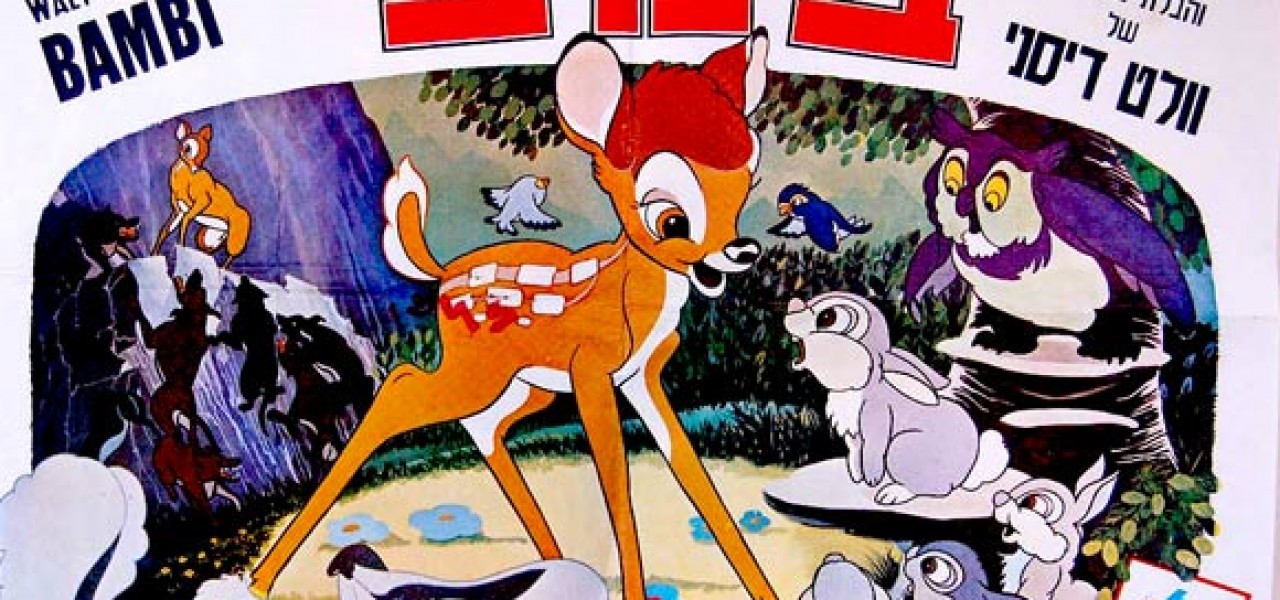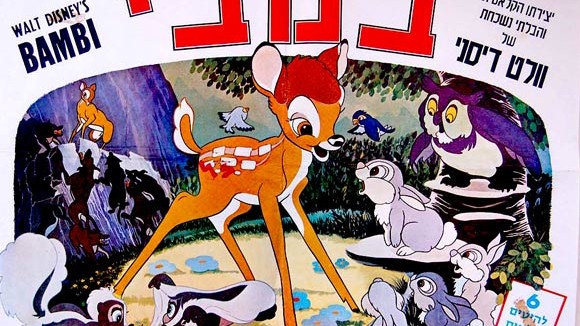

Was Bambi Jewish?

Was Bambi Jewish? It sounds like the setup to an unfunny Family Guy joke, but it’s actually the fascinating argument put forth by Paul Reitter, an author and professor at Ohio State, in a newly published Jewish Review of Books piece entitled “Bambi’s Jewish Roots.” The piece explores the background of Bambi’s author Felix Salten and convincingly argues that Salten’s original Bambi novel was an allegory for anti-Semitism:
It was not until a decade ago, however, that an actual reading of the “Zionist overtones” in Bambi was proposed. In an essay published in 2003, Iris Bruce argues broadly that the novel evokes the “experience of exclusion and discrimination.” But she also pays close attention to its language. Salten’s suggestive phrase for butterflies is “wandering flowers,” and Bambi describes them elsewhere as “beautiful losers” who have to keep moving, “because the best spots have already been taken.” Bruce stresses, as well, that the culture of the deer develops around the fact of their victimization: They tell their children tales that “are always full of horror and misery.”
Likening Bambi to Kafka’s talking-ape story “A Report to an Academy,” Bruce claims that Salten’s work, too, is a critique of assimilation. One of the deer uses the loaded verb verfolgen to ask whether humans and deer might get along: “Will they ever stop persecuting us?” When another deer answers that “reconciliation” with humans will eventually come about, Old Nettla, a third deer with vastly more experience of the world, will have none of it. Indeed, her response foreshadows a line from Salten’s Zionist book Neue Menschen auf alter Erde (loosely translated, new people on ancient ground), which expresses impatience with the enduring “dream of full integration.” Old Nettla seethes that humans, “have given us no peace and have murdered us for as long as we’ve existed.”
Not many of the deer in Bambi persist in believing that living harmoniously among humans is possible. Of the deer that do, two, Bruce points out, wind up being killed by hunters. One of those deer, Bambi’s cousin Gobo, spends time in captivity, and when he returns to the forest boasting of how well he was treated, Bambi is taken aback by how “strange and blind” Gobo has become. Furthermore, where Gobo is proud of the band that humans have placed around his neck (which should have made him off-limits to hunters), the wise “Royal Leader” (fürst) of the deer regards it as a sign of degradation and Gobo as “an unfortunate child.” That Gobo’s faith in humankind leads to his death reinforces the Royal Leader’s assessment. The label “Royal Leader,” on the other hand, reinforces the old deer’s status as a Herzl figure, since at the time Herzl was often given regal titles by Zionist writers. As Bruce puts it, “The old Prince of the Forest, then, can be said to represent Herzl.”
Walt Disney, by all accounts, was completely unaware of the allegorical underpinnings of the story. Like the average American reader of the book, he appreciated the story for its overt environmentalist themes and remade the story and characters accordingly. As Disney developed the film adaptation, he was interested in exploring “the possibilities with animals” and “not with doing the book the way it was.” In his piece, Reitter writes:
Of course, that didn’t stop Disney from transforming the story Bambi tells. Captiousness, melancholy, and a sentimental streak count among the prominent characteristics of Salten’s animals. The animals in the Disney film, which premiered in 1942, are altogether more frolicsome, brash, and affable. The plucky rabbit Thumper, for example, is Disney’s creation, not Salten’s. In the film, more than in the book, the forest, while no Eden, has an initial tranquility that is shattered by the cruelty of man. Indeed, some viewers regarded the film as registering the trauma of the attack on Pearl Harbor and the loss of America’s innocence. Salten, nevertheless, liked the film, though he always described it as “Disney’s Bambi.”
Reitter’s piece has sparked dialogue in the Jewish community about Salten including this follow-up piece in the Jewish daily Forward. As for Walt, he continued to be inspired by Salten’s work and used his work as the basis of two more feature films—Perri and The Shaggy Dog.
(Thanks, Kellie Strøm)

.png)